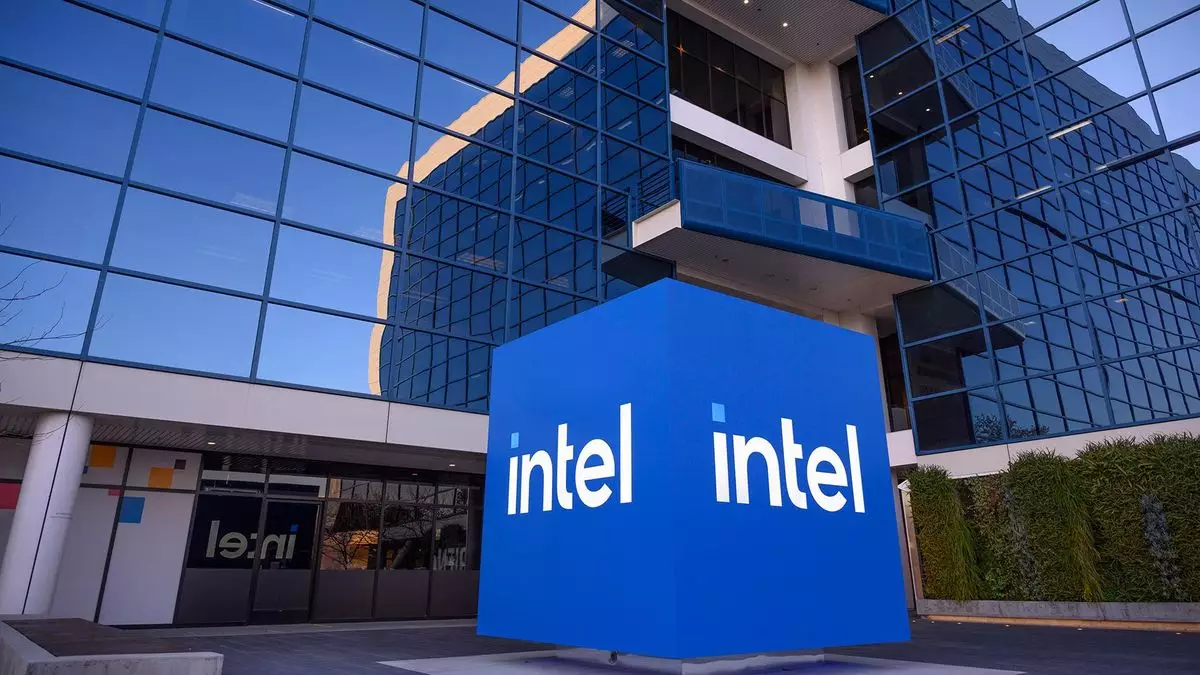Intel has long been a titan in the tech industry, its processors powering countless computers and devices worldwide. However, a closer examination of its decision-making, especially during the tenure of former CEO Paul Otellini, reveals missed opportunities that may have led to its current struggles within a rapidly evolving market. The lost chance to acquire Nvidia, now a leader in AI technology, has become emblematic of Intel’s larger strategic missteps and its corporate culture of insular focus.
In a revealing report by the New York Times, a crucial meeting in 2005 unfolded where Otellini proposed acquiring Nvidia, a burgeoning graphics company. At the time, Nvidia was valued at approximately $20 billion, a staggering sum that would have represented Intel’s largest acquisition to date. Otellini’s vision was met with considerable resistance from the board, a reaction that ultimately led him to withdraw the proposal. This hesitance is particularly striking given Nvidia’s current market cap of around $3.5 trillion, which underscores the gravity of what could have been for Intel.
This moment has been described as “fateful” by attendees, and rightfully so. Nvidia’s prominence today, especially in sectors like AI and data processing, exemplifies a miscalculation on Intel’s part that betrays a lack of foresight. Hindsight is indeed 20/20, but even those within Intel’s ranks seemed to sense the potential importance of graphics chip designs for future data applications long before they became industry staples.
Intel’s corporate culture during the mid-2000s—which some executives described as “the largest single-cell organism on the planet”—was characterized by an insular focus, primarily fixated on its x86 architecture. This cultural rigidity appeared to stifle innovative thinking and hindered the company from adapting to new market realities. The prevailing belief was that Intel’s lead in processor design was invulnerable, much like a creosote bush that poisons competition around it.
However, this narrow mindset proved detrimental. While profits were robust, the reluctance to explore new technologies and markets became apparent. As competitors like AMD and later Nvidia surged forward, Intel remained static, tied to its historical strengths while missing the signs of impending industry shifts. Pat Gelsinger, who currently leads Intel, had a hand in the company’s Larrabee project aiming to merge graphics and processor technology—an effort that ultimately failed but reflected a lingering desire to catch up to Nvidia’s innovation.
Fast forward to today, and Intel’s plight has only deepened. Struggles with manufacturing challenges, mass layoffs, and cancelled dividends illustrate a company now on the defensive. The narrative hasn’t changed much; the failures of foresight and strategic planning continue to haunt Intel, creating a cycle of decline that appears increasingly difficult to escape.
An additional blunder occurred when Intel declined an opportunity to purchase a $1 billion stake in OpenAI in 2018, which would have secured a 15% ownership in a firm now valued at about $80 billion. Such a decision clearly exemplifies ongoing issues in strategic foresight, as the tech landscape pivots toward AI, leaving Intel grappling with a technology it once pioneered.
Intel’s story is a cautionary tale for tech giants at any phase of maturity. The missed opportunity to acquire Nvidia stands as a testament not only to poorly executed strategy but also to the perils of a stagnant corporate culture. The inability to adapt and recognize the value of emerging technologies signifies a broader challenge faced by behemoths across the industry.
Moving forward, Intel must reassess its corporate ethos and prioritize long-term planning that embraces opportunities over complacency. To survive and thrive in an industry defined by rapid change, the company needs a dramatic shift in how it approaches innovation and competition. Past failures should spur a reimagining of options that prioritize agility, collaborative ventures, and a forward-thinking mindset—lessons essential for any organization staring down the abyss of missed opportunities in an unforgiving marketplace.


Leave a Reply